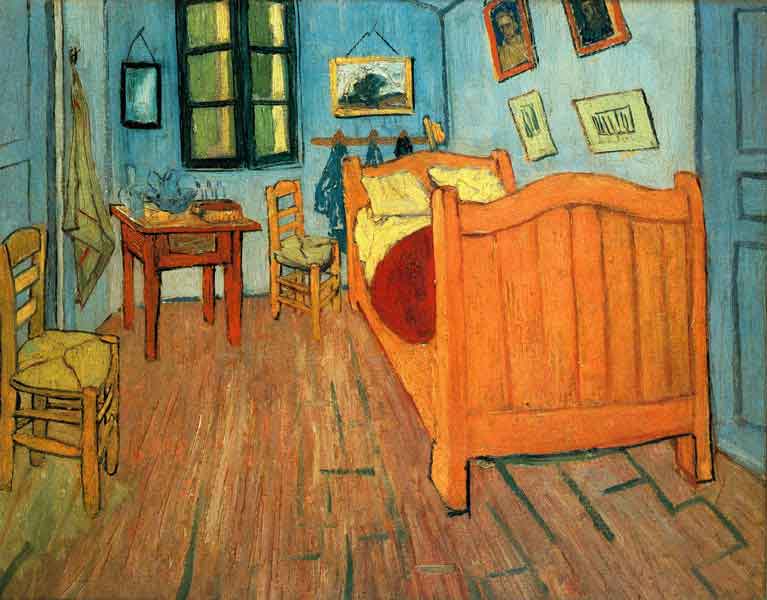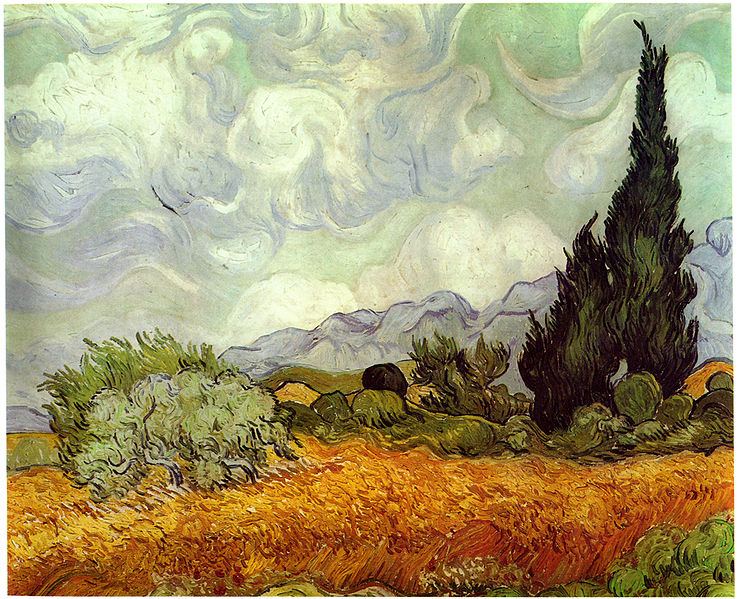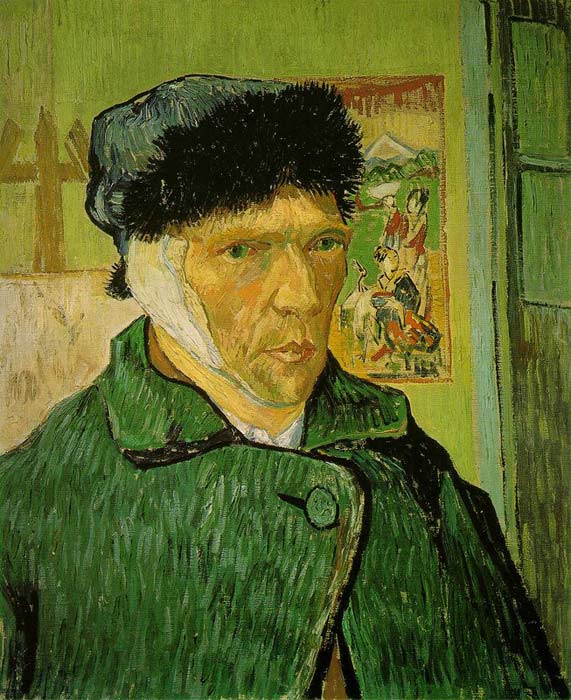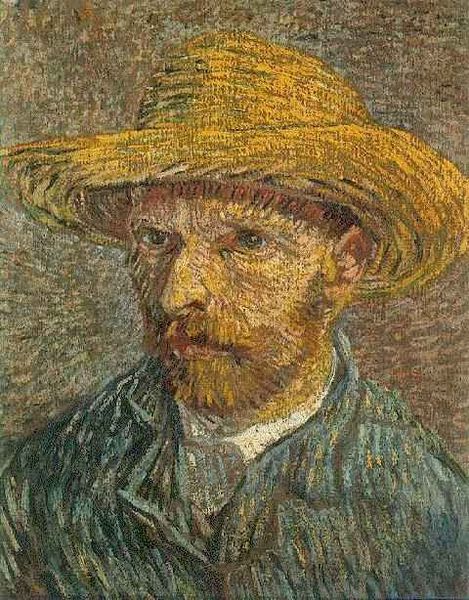| Vincent van Gogh Famous Paintings | |
| The Starry Night, 1889 | |
| Sunflowers, 1888 | |
| Starry Night Over the Rhone, 1888 | |
| Irises, 1889 | |
| The Potato Eaters, 1885 | |
| Yellow House, 1888 | |
| Café Terrace at Night, 1888 | |
| The Red Vineyard, 1888 | |
| Outskirts of Paris, 1887 |
Vincent Willem van Gogh is one of the most famous artists of all time. He has influenced many painters over the years, and been one of the most collected painters that ever lived. He created his own art movement, Post-Impressionism, which was only recognized after his death, just like his work.
Early Life
Van Gogh was born March 30, 1853 in Groot-Zundert, Holland. Other than his birth, not much is known about his child-hood. He had five siblings; three sisters and two brothers. His dad was a pastor for the Methodist church that they attended, and his mom was just a housewife. The only thing Van Gogh ever said about these early years was “my youth was gloomy, cold, and sterile.”
At the age of 15, he became an apprentice at an art dealership called Goupil and Cie. He was transferred to the London branch when he was 20 in 1873. This was the only time in his life he was truly happy. He had a good job, he earned more than his father, and he was in love with his landlady’s daughter, Elizabeth. When he confessed his love to her, she denied it, saying she was engaged to a previous tenant. Devastated, he became increasingly hostile, and started hating his job. In 1876, he was officially let go from Goupil and Cie.
An Artist’s Journey
 Van Gogh then decided he would become a preacher, and traveled to a small mining town to preach to them. Since they were impoverished, he inclined to live like them, and this lasted for about a year. He still needed his ministry degrees to be an official preacher, so he went and studied under a preacher in the area. After failing the test twice, he gave up and left the area. In 1880, his brother, Theo, finally convinced him to become an artist, and he attended the Royal Academy of Art for one year. Van Gogh hated being there, for he was against formal instruction. He believed art should just be a natural talent.
Van Gogh then decided he would become a preacher, and traveled to a small mining town to preach to them. Since they were impoverished, he inclined to live like them, and this lasted for about a year. He still needed his ministry degrees to be an official preacher, so he went and studied under a preacher in the area. After failing the test twice, he gave up and left the area. In 1880, his brother, Theo, finally convinced him to become an artist, and he attended the Royal Academy of Art for one year. Van Gogh hated being there, for he was against formal instruction. He believed art should just be a natural talent.
He left the Academy to train with his cousin by marriage, Mauve. Van Gogh at the time was living with a prostitute, Sien, and his cousin refused to train him if he continued living with her. After a few more months, Van Gogh and Mauve got into a fight and they never spoke again. In about 1884, Van Gogh moved in with his brother, Theo.
 In 1885, Van Gogh’s father died. He went into a slight depression, for a few months, but came out of it when his brother, Theo, held his first art show for him in Paris. Paintings like the Potato Eaters were shown there, but none sold. Many of the people that saw the exhibition thought the paintings were too dark and dreary, and no one wanted to look at paintings of peasants. He became depressed again, and started drinking absinth.
In 1885, Van Gogh’s father died. He went into a slight depression, for a few months, but came out of it when his brother, Theo, held his first art show for him in Paris. Paintings like the Potato Eaters were shown there, but none sold. Many of the people that saw the exhibition thought the paintings were too dark and dreary, and no one wanted to look at paintings of peasants. He became depressed again, and started drinking absinth.
Peter Paul Rubens
The next year, Van Gogh discovered the work of Peter Paul Rubens, another Dutch artist from the Baroque era. He was inspired by Rubens bright colors and mix of contemporary styles with that of his own. Van Gogh was also influenced by the Japanese woodcuts being produced at that time, and he made several paintings like them. For instance, Japonaiserie: Oiran, completed in 1887. The painting is of a geisha off one of the wood blocks, with a border of lilies and bamboo.
Paul Gauguin
 In November of 1887, he met Paul Gauguin, and became obsessed with him. They would hang out, exchange art work, and write letters to each other while they were away. But in December of 1888, they got into a huge fight, and Van Gogh cut off the bottom part of his own ear. He gave a piece to a prostitute named Rachael, although the reasons for why are unclear. Gauguin and Van Gogh never saw or spoke to each other again. After this, Van Gogh went crazy, Theo had to put him into a mental institution. He had two rooms, one for sleeping and one for painting.
In November of 1887, he met Paul Gauguin, and became obsessed with him. They would hang out, exchange art work, and write letters to each other while they were away. But in December of 1888, they got into a huge fight, and Van Gogh cut off the bottom part of his own ear. He gave a piece to a prostitute named Rachael, although the reasons for why are unclear. Gauguin and Van Gogh never saw or spoke to each other again. After this, Van Gogh went crazy, Theo had to put him into a mental institution. He had two rooms, one for sleeping and one for painting.
Mental Institution & Death
 Most of the works we know by Van Gogh were painted in the mental institution, like Starry Night (1889) and Self-Portrait with Bandaged Ear (1889). A good majority of these paintings like Starry Night had the ever-looming presence of death. The black Cypress in the painting is a symbol of death that reaches up into the night.
Most of the works we know by Van Gogh were painted in the mental institution, like Starry Night (1889) and Self-Portrait with Bandaged Ear (1889). A good majority of these paintings like Starry Night had the ever-looming presence of death. The black Cypress in the painting is a symbol of death that reaches up into the night.
In 1890, Van Gogh was released from the mental institution, and relocated to Ravoux Inn, where he had a personal doctor to monitor him. On July 1, 1890, he went out to the wheat fields and shot himself in the chest. He died two days later, on July 3, at the age of 37. He was buried in Auvers-sur-Oise, France. Six months later, his brother Theo, died and was buried next to him.
“Starry starry night…..Now I think I know what you tried to say to me, and how you suffered for your sanity, and how you tried to set them free.” – “Vincent” by Don McLean.
